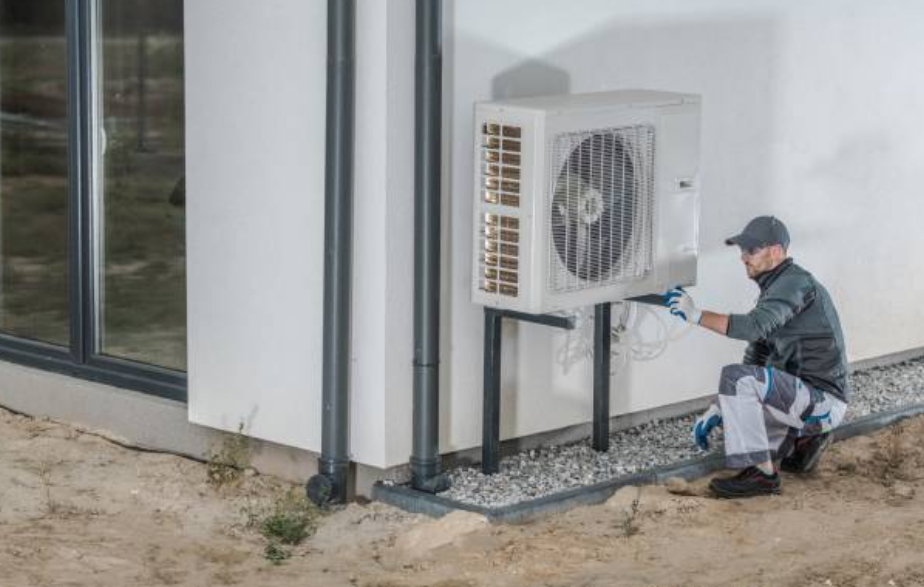Different Types of Ducted Heat Pumps
- Written by NewsServices.com

Introduction to Ducted Heat Pumps
Ducted heat pumps are a convenient and cost-effective way of heating homes. By taking advantage of the environment's natural heat, ducted heat pumps provide an efficient method for keeping your home warm and comfortable throughout the year. In this article, we will discuss what ducted heat pumps are and the benefits they offer.
Definition of Ducted Heat Pumps
A ducted heat pump is a form of air conditioning that uses two main components: an outdoor unit and an indoor unit connected by a series of air ducts. The outdoor unit collects ambient air from outside, while the indoor unit distributes it through your home using either individual vents or one large main vent. This process allows you to control both temperature and humidity within your home in order to maintain maximum comfort levels.
Benefits of Ducted Heat Pumps
The primary benefit offered by ducted heat pumps Christchurch is their energy efficiency; since they use existing ambient temperature from outside rather than burning fuel, they require less energy overall to power them compared with other heating systems such as boilers or radiators.
Types of Ducted Heat Pumps
When it comes to heating a home, there are many options on the market today. One of the most popular and efficient choices is ducted heat pumps. Ducted heat pumps are becoming increasingly popular due to their ability to provide both comfort and energy savings. Heat pumps use refrigerant-filled coils that absorb heat from outside air or water, and then transfer it into the home through a series of ducts. This type of system is highly efficient and can help homeowners save money on energy costs while providing comfortable temperatures year-round. There are two main types of ducted heat pump systems: hydronic heating systems and reverse cycle air conditioners (also known as “split systems”).
Hydronic Heating Systems: Hydronic heating systems use hot water instead of air to transfer heat throughout the house using a series of pipes connected to radiators, baseboard units, or fan-coil units located in each room. The water is heated by either an electric resistance element or natural gas boiler before being circulated throughout the home via insulated pipes. With this system, you can set different temperatures for different rooms in your home – allowing for customizable comfort levels in each space.
Installation Process for Ducted Heat Pumps
Ducted heat pumps are an efficient and cost-effective way to heat and cool your home. They are installed in the ceiling or under the floor of a home and can provide a comfortable, even temperature throughout. Installing a ducted heat pump is not as complicated as you might think, but there are some important steps to follow to ensure it is done properly.
The first step in the installation process for ducted heat pumps is finding the best location for the unit. Since these units require space above or below them, it’s important that they be placed in an area that won’t interfere with other parts of your house or block any pathways. It should also be close enough to windows and doors so that air can easily flow through them when needed.
Once you’ve found an appropriate spot for your unit, it’s time to begin the installation. Start by marking off where you want the ducting to go from inside your house out through walls or ceilings into outside areas like a garden shed or garage if necessary. This will involve running pipes from either inside wall cavities or through attic spaces out into these areas depending on how far away they need to go.
Maintenance and Repairs for Ducted Heat Pump Systems
Maintaining and repairing ducted heat pump systems is an important way to ensure you get the most out of your system. Heat pumps are a great way to heat or cool large areas, but they require regular maintenance and repair in order to keep them working properly. Here are some tips on how to maintain and repair your ducted heat pump system.
- Regularly Change Your System’s Filter: The filter helps capture dust, dirt, pollen, and other particles from the air before it enters your home’s heating or cooling system. It is important to regularly change the filter every three months or so in order for it to work properly.
- Check for Leaks: A leaky duct can lead to air escaping from the system, which will reduce efficiency and cause higher energy bills. Inspecting your ductwork for any signs of damage such as cracks or holes should be done at least once per year in order to ensure any leaks are avoided before they become an issue that requires costly repairs.
- Clean Out Coils: Heat pumps have condenser coils that help keep your home comfortable by transferring heat between outdoor and indoor units during operation; however, these coils can easily become clogged with dirt or debris over time.
Conclusion
Ducted heat pumps are a great choice for anyone looking to enjoy efficient heating and cooling in their home. They provide superior comfort and energy savings, while also being highly reliable and easy to maintain. With their ability to be tailored to any space, they are an ideal solution for both residential and commercial applications. Additionally, they can be integrated with other systems, making them a great option for those who want a comprehensive climate control system that is both efficient and cost-effective.






